I feel at this point as if you pretty much know what you’re going to get with Eizouken ni wa Te o Dasu na!, and that’s both a strength and a weakness. It certainly remains a visual spectacle of the highest order, distinctive and arresting in a way only a few series – FLCL, Tsuritama, some of Yuasa’s earlier works – ever are. When you get series with this much personal vision behind them it’s almost as if you’re watching a different medium from most anime. It’s like the difference between a baguette from a great Paris boulangerie and something wrapped in plastic off the shelf in the bread aisle at Safeway.
That, obviously, is great. But at the risk of sounding curmudgeonly (as if that ship hasn’t long since sailed) things are pretty one-note with Eizouken for me. We’re more or less seeing the same six-minute scene recycled over and over. Asakusa acts like an overeager 8 year-old, Mizusaki oohs and ahhs at whatever madness is happening, and Kanemori internally monologues about how impractical and childish the other two are and scolds them. Then, a fantasy sequence. Repeat, then repeat a few more times until your 22 minutes are up.
I’m perfectly fine with that being what Eizouken is for twelve episodes, because Yuasa and his team are so good at making their beautiful pictures move that the show will never stop being entertaining. But I’m not going to sit here and call that great anime, if indeed that turns out to be all this show is. It’s not hard to see why this series is kind of underwhelming (at least for me) in manga form, because if you take away the Science SARU magic touch all you’re left is that repeating scene on a flat and silent piece of paper (or screen).
Three episodes is longer than it seems – it’s a quarter of this series’ run in the books – and if we were going to see development from these characters and an attempt to make them jump from characters to people I’d expect to have seen at least a few hints of it by now. That makes me think the best chance for Eizouken to make an impact beyond pure visuals is as a paean to animation. And it is off to a better start there – it’s quite obvious that Midori and Tsubame love anime sincerely and that their love represents that of the series’ (both manga and anime) creators.
I don’t actually care that much at this point whether the Motion Picture Club gets saved or not because I don’t really care about any of the cast, but it should nevertheless be interesting to see girls try. The two idiots are much more interesting as artists than they are in any other way, and their naturally complementary strengths should prove compatible in the creative process. The problem (and no, the irony is not subtle) is that what’s missing from their creative process is clearly a writer. Midori just wants to draw cool settings and tech and Tsubame just wants to draw faces and bodies in motion, and the most either of them can muster is a situation, not a story. That’s fine for a three-minute audition video for club funds, but it’s not really creating art in the truest sense of the act.
That leads us to their tank girl short, which promises to be interesting to look at at the very least. These two animators may not have a writer (or a director for that matter, though Asakusa can probably fudge that), but they definitely have a producer – so one way or the other, I expect things will get done. Just once though, when they really piss her off I’d like to see Sayaka bash the two stooges’ heads together like she was Moe Howard.



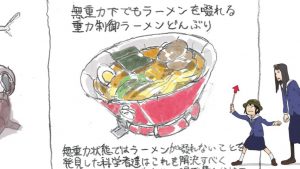




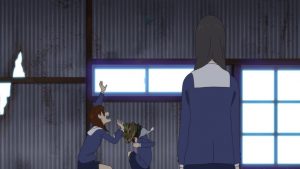
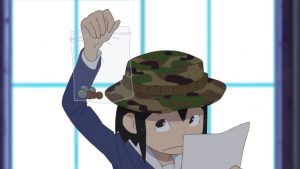


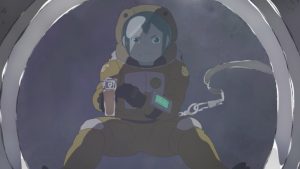
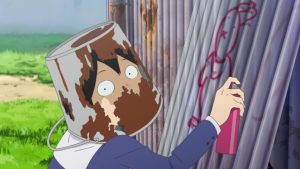

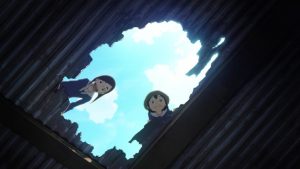
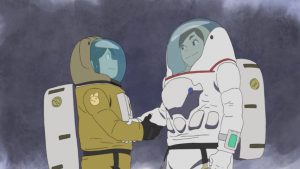


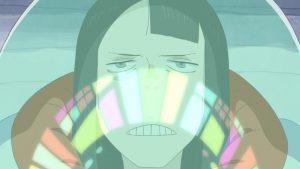
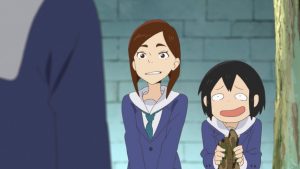


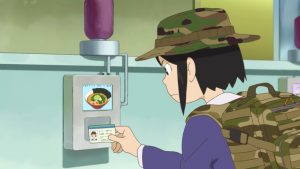
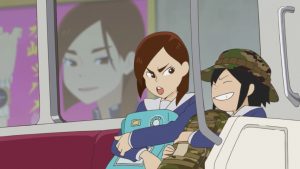

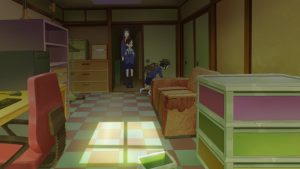
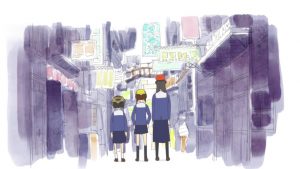
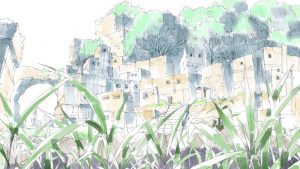
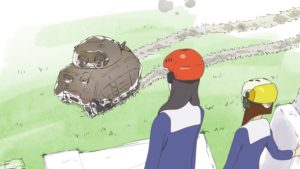
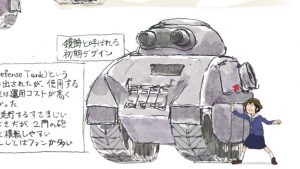

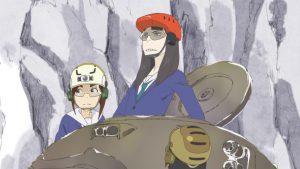




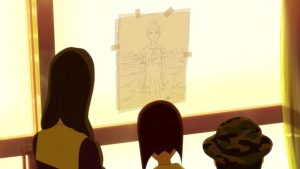
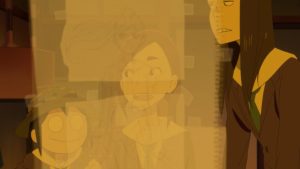
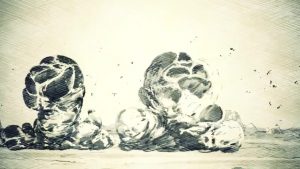


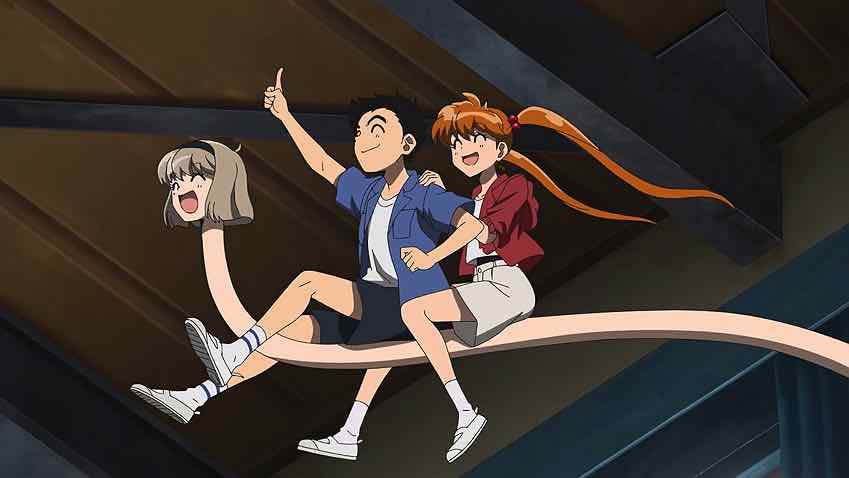
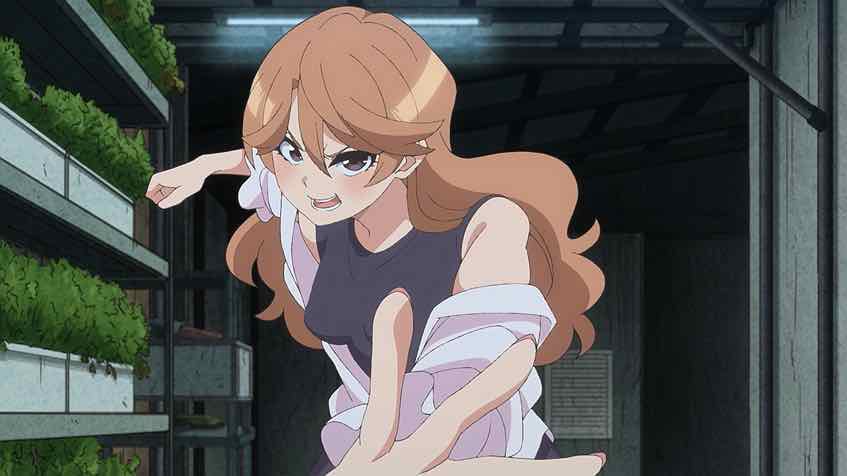
Kim
January 21, 2020 at 5:41 amI get what you are saying about the characters being more caricatures then real developed characters. I do think they exist more as a vehicle.
Personally it doesn’t really bother me that much as I feel I am learning more about animation in a fun creative way. And the 3 girls while not fully developed still make me laugh with their antics.
Guardian Enzo
January 21, 2020 at 7:34 amThat’s pretty much where I am. If this is it, fine – it’s fun and wild to look at (though the humor is a bit his and miss for me).
Deluxe
January 21, 2020 at 6:58 am“That’s fine for a three-minute audition video for club funds, but it’s not really creating art in the truest sense of the act.”
Animation in itself is the art, story is just a means to an end. This is what Yuasa is trying to tell you, but you don’t seem to acknowledge this point of view.
Guardian Enzo
January 21, 2020 at 7:36 amOh, I get it – I just don’t find it especially persuasive. I’m a writer, and I’m biased on favor of character driven narrative fiction over material where the writing is basically immaterial.
sonicsenryaku
January 23, 2020 at 3:09 pmNah, I don’t think Yuasa is trying to say that animation alone is the art and that the story is a means to an end; but rather, animation in and of itself IS A STORY, and that every decision that goes into making animation (good, evocative animation anyway) has a significant purpose in being able to communicate meaningful ideas and relatable emotions. I don’t necessarily agree with Enzo’s view of looking at animation and writing as if their diametrically opposed. Just like how music requires someone to think, plan, and WRITE it, so too does animation. Visuals are another form of subconscious-altering, interpersonal, creative expression. It IS a form of writing; it’s just in a different state of matter. Just as how music can tell a moving story, so does animation; and what both of those mediums share in common is the creator’s need to contemplate and structure how to use the technique to elicit a psychological response. That’s what Yuasa is trying to communicate here.
The reason why most people don’t get why visuals are so important or comparable to traditional writing is because it’s not as easy to understand visual techniques and the theories behind them (or to notice them for that matter) in the same way that it is basic tenets of writing, which is why Yuasa (and the creator of this series) is going out of their way to clarify that to the audience. People’s evaluation on visuals, especially when they aren’t as conscientious about them usually boil down to a surface level appreciation: Either: “Oh, those are good production values,” or “those production values suck.” Because the observation is so broad, they don’t lend themselves to a deep appreciation for them, leading to people who say stuff like, “visuals don’t matter much to me.” I don’t know; there’s more to this concept that I could explore for hours but with the goal of keeping things short, I’ll wrap up by reiterating that visuals are right there with traditional writing techniques in terms of importance when discussing storytelling. In relation to live-action, directors like Stanley Kubrick understood that emphatically which is why he was one of the greatest directors to ever live. In bringing this back to animation, Satoshi Kon also understood this as well; as a matter of fact, he made sure to time his storyboards in a particular way to affect the senses of the audience in aim of influencing his storytelling in the way he imagined it.
Guardian Enzo
January 23, 2020 at 4:40 pmWhat the hell?
sonicsenryaku
January 24, 2020 at 1:16 am“What the hell?”
Hahaha; what a reaction. Well sometimes with the way you talk about visuals or animation, it’s almost as if you think the two exist in separate bubbles. And when i say that, I don’t mean that you think visuals are not important at all or that they don’t affect storytelling (Diametrically opposed wasn’t the right phrasing there); I know that’s not how you feel. Like you just said, you’re a writer, so you’ll always appreciate a character-driven narrative over one where the writing is immaterial; but as I’ve already expressed visuals ARE writing; animation IS “writing.” The term of writing we are so use to referring to when describing what gives storytelling its quality is just an abstraction to express the structured, logical, cause and effect construction of ideas within that story. You can express that cause and effect through formal language, through music, or through visuals. So when you say something like, “I’m a writer, and I’m biased on favor of character driven narrative fiction over material where the writing is basically immaterial,” it almost sounds as if (based on the context of the comment you were responding to) you deem “writing” a separate entity from visuals, although perhaps I’m wrong with that assessment. I said what i said (albeit with the wrong phrasing) because at their core, writing and visuals are not that different in the value they bring to storytelling, but it feels as if you think there’s a significant difference in their worth because of the value you place upon traditional writing (hence me disagreeing if that’s the viewpoint you have). You aren’t the only one who feels that way (writer or not) and certain won’t be the last, but that’s all the more reason why i think a show like Eizouken and the concepts Yuasa is trying to explore with it is important to remedying this misunderstanding people have. I guess for the sake of clarification, i should ask you what you meant exactly when you said: “you’ll always appreciate a character-driven narrative over one where the writing is immaterial,” because maybe I’m just off-base with all this.
Guardian Enzo
January 24, 2020 at 7:44 amExactly what I said. If there’s one element that’s most essential for me it’s good writing, not visuals. But there’s no allusion to opposition – either explicit or implicit – in that statement.
sonicsenryaku
January 24, 2020 at 1:57 pm“If there’s one element that’s most essential for me it’s good writing, not visuals.”
And therein lies the point I was trying to make: Visuals and “good writing” aren’t completely divorced of each other. Visuals have a planning to them that requires a person to think about the cause and effect relationship of characters and events in the way traditional writing does. Having impressive visuals isn’t just about how good the visuals look or appraising it simply on its technical merits . I can communicate a powerful character arc, simply by how i would craft my visuals (which I’m sure you’re aware of); no dialogue whatsoever ; what do you call that? Is that not a form of “writing”? Those visuals mean something and carry a weight to them because of the thought, purpose, and creativity that goes into them. Depending on how skilled you are, you can say a shit ton through visuals alone; Why? because like traditional writing, visuals IS storytelling (that’s what Yuasa is trying to say). When people say “writing,” they’re really just referring to storytelling; that’s what I’m trying to make salient to you by arguing that visuals is just another form of language, a language that, if understood better, would be appreciated even more, which is what Eizouken hopes to achieve. Whether or not Midori and Tsubame have a good grasp of literal writing has no effect on their ability to be storytellers. If they were good storytellers, they could make a great narrative through their visual prowess alone
Guardian Enzo
January 24, 2020 at 2:33 pmYes, but not completely divorced and diametrically opposed (your words) are not remotely the same concept. So I feel like you were arguing against a straw man in the first place.
sonicsenryaku
January 24, 2020 at 11:56 pm“Yes, but not completely divorced and diametrically opposed (your words) are not remotely the same concept. So I feel like you were arguing against a straw man in the first place”
Enzo budyy, I already said “diametrically opposed” was the wrong phras there. i misspoke; probably because i was writing the comment so quickly. I was definitely not trying to strawman your argument at all.
Simone
January 24, 2020 at 8:52 amWell, they’re animators, that’s their main skill, and a three minutes thing is basically just a demo to show off their potential. It makes sense to avoid writing a complex story. It might be a way to attract someone else who has that skill for their next, more complex project.
Guardian Enzo
January 24, 2020 at 9:13 amI don’t dispute that, which is why I said it was fine for basically a three minute commercial advertising the club. My larger point was that the series as a whole doesn’t (to me at least) have any compelling narrative so far apart from manzai gags and showing off the animation (which is perfectly fine when it’s Yuasa and team),